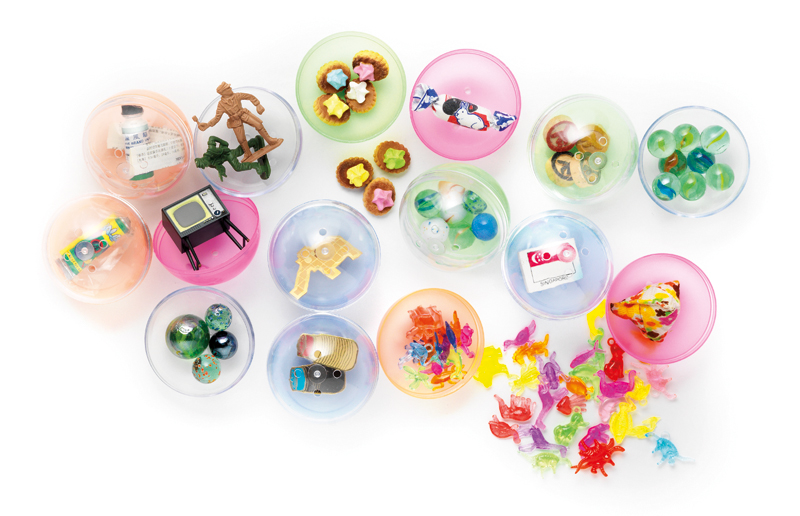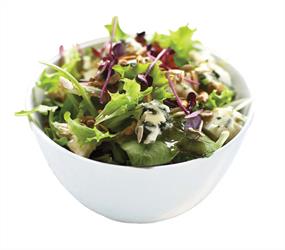A Walk Down Memory Lane: What Will We Get Out Of Nostalgia?

And this hunger for the yesteryear is shaping not only our entertainment. With our country’s golden jubilee just around the corner, more Singaporeans have been reminiscing about the past through personal social projects or nation-wide initiatives.
Dear to their hearts is the loss of places with old-world charm – just look at the public debates over kampungs in Pulau Ubin and Lorong Buangkok, and the Toa Payoh dragon playground.
But sentiment aside, could this love affair with the bygone days be a constructive force? Or is it a blinding anxiety, holding us back from the future?
What is nostalgia?
Nostalgia used to mean homesickness, which was considered a medical condition in the 17th century. Now, nostalgia is commonly defined as a longing for the past.
Experts have noted that this sentiment is linked to the disappearance of familiar icons or experiences as a nation develops, and is also common in Hong Kong, Taiwan and other Asian countries that have experienced dizzying rates of modernisation.
“The ultra-rapid changes in Asia have created an equally rapid rise in anxiety about the pace of change and feelings of loss,” explained social geography professor Alastair Bonnett in his upcoming book The Geography of Nostalgia (available August 2015).
People are also searching for things beyond the modern that will give them a “feeling of connection” to the country, said Dr Kevin Tan, president of the International Council on Monuments and Sites (ICOMOS) Singapore, a non-governmental organisation working on the conservation and preservation of heritage sites.
For Mr Alvin Tan of the National Heritage Board (NHB), the rise of nostalgia reflects Singapore’s maturity as a society. “We can afford to think deeper about issues like heritage, belonging, identity,” beyond bread and butter issues, said the Assistant Chief Executive (Policy and Development).
The NHB has seen growing public interest in its heritage offerings: the number of visitors at its heritage outreach events grew 12% to 5.7 million in 2013 from the previous year. (2014 figures will be published later this year.)

Nostalgia in the digital age
Ironically it is modern technology, mainly the Internet and social media, which has helped fuel the nostalgia, as online sharing of memories and history reaches a wide audience, particularly the younger generation.
Blogs like “Remember Singapore” and “ The Long and Winding Road” document heritage sites, while Facebook groups such as “On a little street in Singapore” and “Nostalgic Singapore” have become virtual kopitiams where netizens gather to share old photos and anecdotes.
On a larger scale, there is the Singapore Memory Project, facilitated by the National Library Board. Aimed at nurturing national bonding and rootedness through collective remembrance, the project crowdsources personal memories of life in Singapore via an online portal and a mobile app. Bloggers who write about Singapore are also invited to pledge their blogs to the portal. Since 2011, more than a million stories have been gathered.
The NHB also reaches out to the young by using the latest technology, such as drones and Google Glass, in their YouTube documentaries of heritage sites such as four lookout towers built in the 1960s and ’70s and the Marsiling tunnels. Using Google Street View, they have also created virtual tours of places such as the Sungei Road flea market and the Chinese Garden.
Others gave nostalgia a creative spin: Writer Justin Zhuang plotted old-school playgrounds on Google Maps in 2010, while 3-D printing company mēkā has printed miniature models of demolished icons like the National Theatre and the old National Library as an SG50 project. (See: #yesteryearsproject)
#yesteryearsproject
 PHOTOS BY SEAN CHAM (INSTAGRAM: @ABLANKFRAME)
PHOTOS BY SEAN CHAM (INSTAGRAM: @ABLANKFRAME)
Artist Sean Cham showcases abandoned heritage sites by portraying them in a different light. The 21-year-old takes his viewers back in time with Yesteryears, a series of 50 self-portraits that re-imagine what old places (e.g., deserted schools and forgotten forts) were like when they were bustling with life.
He told Challenge that the project was sparked by the en bloc redevelopment of his grandmother’s flat, and the realisation that “many memories that resonate within those walls would be torn down together with the physical structure”.
He wanted to revisit the overlooked stories of places that “have significance in telling the Singapore story”, which he selects by scouring online articles or heritage blogs.
His photos have struck a chord with many Singaporeans, some of whom relish the opportunity to share their memories. But other than helping the audience reminisce or learn about the past, Yesteryears is also “a celebration of… how far we have progressed as a nation”, which is timely for SG50.
However, Mr Cham made sure to look beyond the five decades of independence for a fuller picture of Singapore’s history. “The 200 years of hardship and turmoil our forefathers went through should be celebrated as well,” he added.
Sparking heritage conservation
But nostalgia doesn’t end there. For some, it can translate into action, something consequential. “As you reminisce about the past, a lot of the past in the present is disappearing,” said ICOMOS’ Dr Tan, who was the president of the Singapore Heritage Society until 2011. “So I don’t think it’s enough to be nostalgic.”
Instead, the sentiment should drive greater public awareness of and activism for heritage protection, he added.
For one, the heated protests in 2011 against building a road through the Bukit Brown cemetery exemplify how the public is increasingly vocal about the destruction of places close to their hearts.
Dr Tan, who is writing a paper on the state-society interactions for heritage conservation, observed that the government has moved away from its bulldozer approach in the earlier years to become more open to public engagement.

However, there remains a “fight about heritage” since the authorities and civil society have differing views of what should be conserved and how best to do so, he added.
The NHB confirmed this. “Policy issues are increasingly complex,” said Mr Tan. “Everybody wants to have a say when it comes to redevelopment issues. To further complicate matters, every interest group has different perspectives and views of what constitutes a heritage site.”
In 2013, the NHB formed the Impact Assessment and Mitigation (IAM) division to mediate between citizens and public agencies facing such differences. For instance, they helped the owners of the last two surviving wood-fired dragon kilns, located on state land, negotiate the extension of their lease with the Singapore Land Authority.
Mr Tan added that since the Bukit Brown controversy, more public agencies have been approaching the NHB for advice on the heritage impact of their development projects. This demand for heritage impact assessment expertise was another impetus for the IAM’s formation.
The IAM also comes up with measures to mitigate the impact of redevelopment. For an upcoming housing estate at the former Bidadari cemetery, the IAM worked with heritage interest groups, the Housing & Development Board and the National Parks Board to incorporate Bidadari Memorial Garden into estate plans.
It also works closely with the Urban Redevelopment Authority (URA), which has the legal power to conserve heritage buildings and areas as part of land use planning.
In 2013, both agencies assessed the heritage value of 18 Queenstown sites proposed for conservation by heritage group My Community. Eventually three were gazetted for conservation: the Queenstown Library, the former Commonwealth Avenue Wet Market, and Alexandra Hospital.
These community landmarks, steeped in architectural and social value, reflect the URA’s commitment to conserve buildings that are meaningful to Singaporeans. Nearly 7,200 buildings have been conserved in the past 25 years, partly because of growing public feedback and expectations to protect sites important to local identity.
 PHOTO BY PHILIPP ALDRUP
PHOTO BY PHILIPP ALDRUP
Breathing new life into old spaces
At Golden Mile Tower, two cinema halls of the former Golden Theatre have been rejuvenated as The Projector, an independent cinema that opened in January 2015.
From the steel-framed flip-up seats to the retro signage, elements from the past – which the cinema's creators "fell in love with" and wanted to showcase – are still apparent.
Started by development consultancy Pocket Projects, The Projector stemmed from the team's penchant for regenerating "overlooked or neglected places", said the cinema's manager Sharon Tan. They had previously revitalised conserved shophouses in Geylang, a red-light district.
Ms Tan and her team sought to "make Golden Theatre relevant to people again… as a movie theatre at its core, but with the added flexibility of accommodating other creative uses". They added modern elements: new upholstery for the seats and beanbags to spiff up the space, while one hall now has a stage for music performances, movie dress-up nights and other events.
 PHOTO BY PHILIPP ALDRUP
PHOTO BY PHILIPP ALDRUP
The project met with an encouraging response even before it was launched – its crowdfunding campaign raised over $73,000 within two months.
By drawing in new crowds of mostly young adults, The Projector opens the door for more awareness of Golden Theatre’s past glory. Beyond its notoriety as a former venue for R21 films, it was the largest local cinema when it opened in 1973 and a popular destination for Mandarin films.
Beyond physical heritage
Then there is what is known as “intangible heritage”. Traditional trades, practices, rituals, festivals, and even food, languages and music – these cultural aspects are just as important as tangible heritage in contributing to a nation’s sense of identity, stressed Mr Tan. That’s why the NHB also supports ground-up projects in these areas through its heritage grants.
One example is The Songs We Sang, a new documentary celebrating xinyao, a Mando-pop movement popular in the 1980s and ’90s. A xinyao concert organised for this film last July saw more than 2,000 people thronging Bras Basah Complex and braving the rain to revel in the hit songs of the past – showing that people pine for more than just places, but also the pursuits of their bygone youth.
The NHB plans to launch a nationwide survey to identify and document Singapore’s intangible heritage at the end of the year. This follows another national survey, starting in mid-2015, which focuses on creating a database of tangible heritage sites to aid long-term heritage planning.
The dark side of nostalgia
While heritage and local identity preservation are important, nostalgia can be a double-edged sword, leading also to dogmatism and a rejection of change and new possibilities, warned Ms Tiana Desker, a futurist.
For example, a fixation on a romanticised past could “grow into a backward-looking, exclusionary nationalism”, said the Senior Assistant Director at the Strategic Policy Office.
Already, some Singaporeans are quick to describe themselves as “Singaporean born and bred”, to differentiate themselves from naturalised citizens.
Even as we immerse ourselves in nostalgic moments – from celebrating childhood symbols like five stones to the re-enactment of policemen donning shorts for the National Day Parade – we also need to accept an evolving national identity that weaves in the stories of new citizens, said Ms Desker. Their stories add to and affirm Singapore’s values of multiculturalism and meritocracy.

Nostalgia to empower change
So if we can view it in perspective, nostalgia can be a constructive force, by reflecting how we want to improve the future. For example, said Ms Desker, when people hark back to the kampung days, they are pining for what they feel is now lacking: a sense of community, more time and greater access to nature.
Taken positively, these sentiments can spur us to recreate the positive aspects of kampung life in the modern context.
Ms Desker is studying Singaporeans’ desire to revive the kampung spirit, an interest sparked by dialogues from Our Singapore Conversation.
She suggested that the government can help citizens channel their nostalgia constructively by putting greater emphasis on the intangible things they value.
Beyond preserving green spaces and supporting community gardens, we can create even more spaces that allow an escape from our busy urban lives. For example, Helsinki has “The Chapel of Silence”, a multi-faith chapel that encourages people to have a moment of peace and reflection in the centre of a business district.

Shaping national identity
The trend of nostalgia also has other longterm implications.
“It may appear as nostalgia but I think it is much more about people having a chance to think through what they feel are the identity markers as individuals, as a community, as Singapore,” said Mr Kelvin Ang, Director of Conservation Management, at the URA.
People pull up things and places they relate to, like old playgrounds or shophouses, to “symbolise a sense of belonging”. Aware of this, the URA has been encouraging the public to share their personal memories of conserved places. Such stories, found on My Conservation Portal, add human interest to the national narrative, and ensure that conserved sites are meaningful icons of identity.
Its own initiatives aside, Ms Desker argued, the government could also do more to support ground-up efforts to redefine our national identity.
For example, she suggested that the government could invest more in the creative arts – Singaporean literature, music, art and architecture – which will build up our sense of a shared Singaporean culture.
“A bunch of bureaucrats cannot come up with national identity. It’s the work of your poets, your artists, the brilliant people of your generation,” she stressed, adding that support, such as funding for artists, has to be consistent over a period of decades to reap results.
Future from the past
It remains to be seen whether our fascination with the past will wind down after the SG50 celebrations. Some think that we will always be nostalgic for something; others feel we should stow away our memories and focus on the present.
Regardless of whether nostalgia is a passing fad, why not embrace it while it lasts? Use it as a reminder of the importance of balancing the traditional and the contemporary, preservation and progress, or even leverage it as a powerful spark for change.
- POSTED ON
Jul 1, 2015
- TEXT BY
Tay Qiao Wei
- PHOTOS BY
LUMINA
-
Deep Dive
Strengthening Singapore’s Food Security









